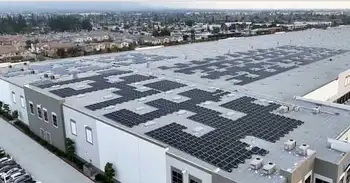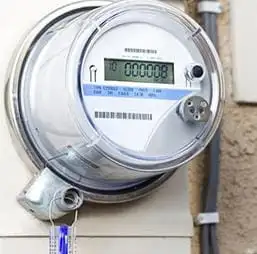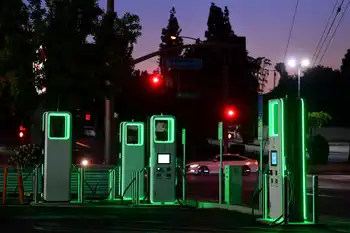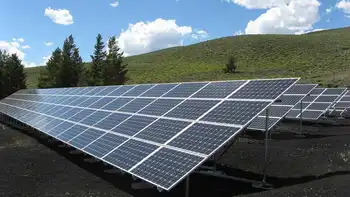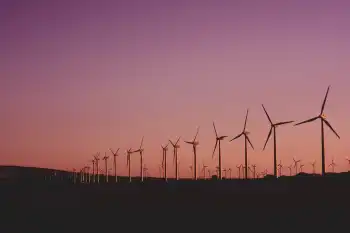UK Electric Vehicle Sales Surge to Record High

Electrical Testing & Commissioning of Power Systems
Our customized live online or in‑person group training can be delivered to your staff at your location.

- Live Online
- 12 hours Instructor-led
- Group Training Available
UK electric vehicle sales reached a record high in September, with battery and hybrid cars making up over half of new registrations. SMMT credits carmaker discounts, new models, and a £3,750 EV grant for driving strong demand across the UK market.
Why are UK Electric Vehicle Sales Surging to a Record High?
UK electric vehicle sales are surging to a record high because automakers are offering major discounts, more models are available than ever, and the government’s new £3,750 EV grant is making electric cars more affordable and appealing to both fleets and private buyers.
✅ BEV sales up nearly one-third in September
✅ Over half of all new cars are now electrified
✅ £3,750 EV grants boost consumer confidence
Electric vehicle (EV) sales in the United Kingdom reached a record high last month, marking a significant milestone in the country’s transition to cleaner transportation. According to the latest figures from the Society of Motor Manufacturers and Traders (SMMT), sales of pure battery electric vehicles (BEVs) surged by nearly one-third to 72,779 units in September, while plug-in hybrid registrations grew even faster.
The combined total of fully electric and hybrid vehicles accounted for more than half of all new car registrations, underscoring the growing appeal of electrified transport, alongside global EV market growth, among both businesses and private consumers. In total, 312,887 new vehicles were registered across the country — the strongest September performance since 2020, according to SMMT data.
SMMT chief executive Mike Hawes said the surge in electrified vehicle sales showed that “electrified vehicles are powering market growth after a sluggish summer.” He credited carmaker incentives, a wider choice of models, and government support for helping accelerate adoption, though U.S. EV market share dipped in Q1 2024 by comparison. “Industry investment in electric vehicles is paying off,” Hawes added, even as he acknowledged that “consumer demand still trails ambition.”
The UK government’s new electric car grant scheme has played a significant role in the rebound. The program offers buyers discounts of up to £3,750 on eligible EVs priced under £37,000. So far, more than 20,000 motorists have benefited, with 36 models approved for reductions of at least £1,500. Participating manufacturers include Ford, Toyota, Vauxhall, and Citroën.
Ian Plummer, chief commercial officer at Autotrader, said the grant had given a “real lift to the market,” echoing fuel-crisis EV inquiry surge in the UK. He noted that “since July, enquiries for new electric vehicles on Autotrader are up by almost 50%. For models eligible for the grant, interest has more than doubled.”
While the majority of BEVs — about 71.4% — were purchased by companies and fleets, the number of private buyers has also been increasing. Zero-emission vehicles now account for more than one in five (22.1%) new car registrations so far in 2025, similar to France’s 20% EV share record, highlighting the growing mainstream appeal of electric mobility.
The surge comes amid a challenging backdrop for the automotive sector, even as U.S. EV sales soared into 2024 across the Atlantic. The UK car industry is still reeling from the effects of US trade tariffs and recent disruptions, such as Jaguar Land Rover’s production shutdown following a cyberattack. Despite these hurdles, the strong September figures have boosted confidence in the industry’s recovery trajectory, and EU EV share grew during lockdown months offers precedent for resilience.
Among individual models, the Kia Sportage, Ford Puma, and Nissan Qashqai led overall sales, while two Chinese vehicles — the Jaecoo 7 and BYD Seal U — entered the top ten, reflecting China’s growing footprint in the UK market. Analysts say the arrival of competitively priced Chinese EVs could further intensify competition and drive prices lower for consumers.
With electrified vehicles now dominating new registrations and fresh government incentives in place, industry observers believe the UK is gaining momentum toward its long-term net-zero goals. The challenge, however, remains converting business fleet enthusiasm into sustained private-buyer confidence through affordable models, with UK consumer price concerns still a factor, reliable charging infrastructure, and continued policy support.
Related Articles





